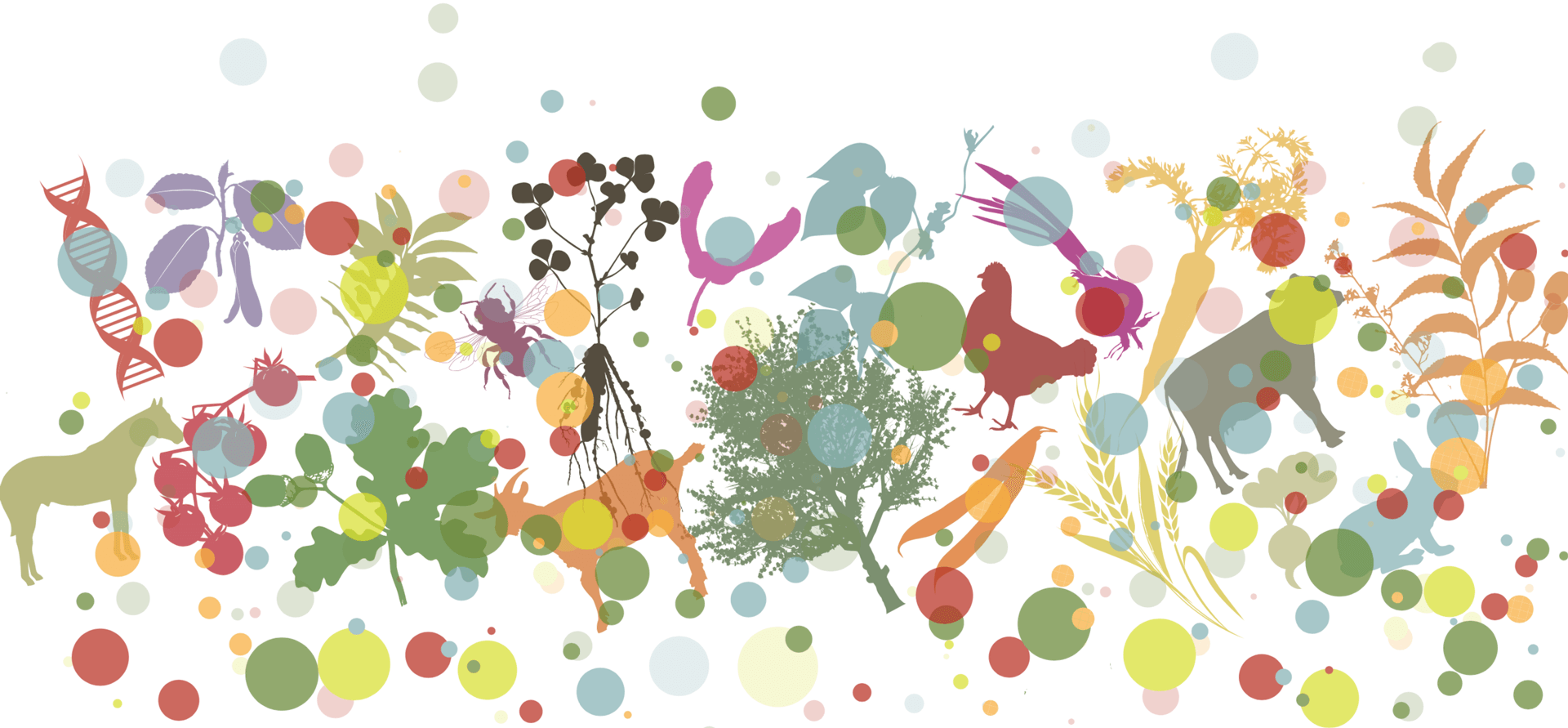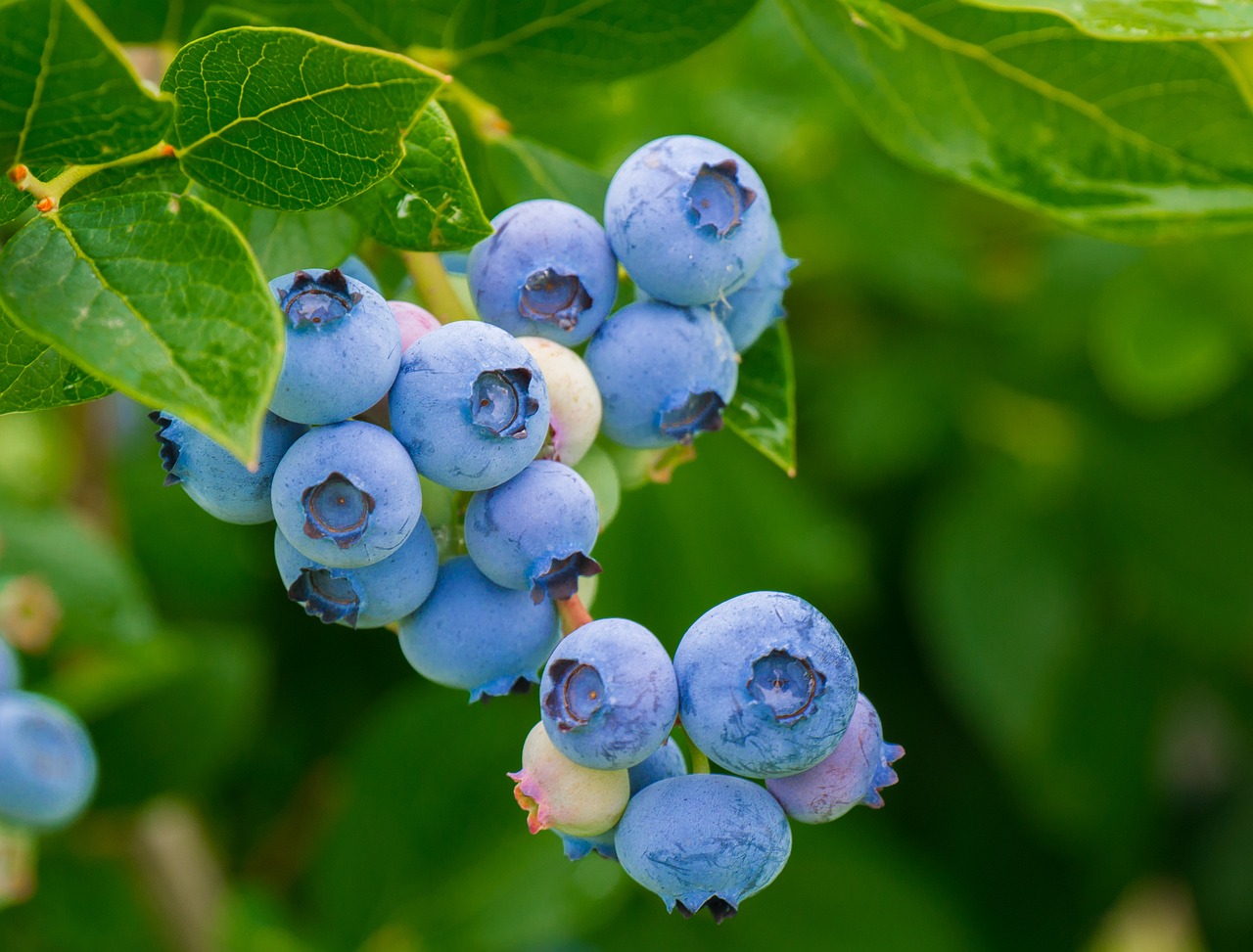A public mid-density genotyping platform for cultivated blueberry (Vaccinium spp.)
Main Article Content
Abstract
Small public breeding programmes have many barriers to adopting technology, particularly creating and using genetic marker panels for genomic-based decisions in selection. Here we report the creation of a DArTag panel of 3,000 loci distributed across the tetraploid genome of blueberry (Vaccinium corymbosum) for use in molecular breeding and genomic prediction. The creation of this marker panel brings cost-effective and rapid genotyping capabilities to public and private breeding programmes. The open access provided by this platform will allow genetic data sets generated on the marker panel to be compared and joined across projects, institutions and countries. This genotyping resource has the power to make routine genotyping a reality for any breeder of blueberry.
Article Details

This work is licensed under a Creative Commons Attribution 4.0 International License.
Authors retain copyright of the articles published in Genetic Resources and grant the journal right of first publication with open access. All articles published in Genetic Resource are licensed under Creative Commons Attribution 4.0 International License (CC BY 4.0) that allows others to download, share and adapt the work for commercial and non-commercial purposes as long as proper attribution to the original article is given. Genetic Resources permits and encourages authors to post items submitted to the journal (including the publisher's final layout) on personal websites or institutional repositories after acceptance and/or publication, while providing bibliographic details that credit their publication in Genetic Resources.
Blyton, M D J et al. (2023). “A new genetic method for diet determination from faeces that provides species level resolution in the koala”. bioRxiv 2023.02.12.528172. DOI: https://doi.org/10.1101/2023.02.12.528172.
Bolger, A M, M Lohse, and B Usadel (2014). “Trimmomatic: a flexible trimmer for Illumina sequence data”. Bioinformatics 30(15). DOI: https://doi.org/10.1093/bioinformatics/btu170.
Clark, L, A Lipka, and E Sacks (2019). “polyRAD: Genotype calling with uncertainty from sequencing data in polyploids and diploids”. G3 Genes|Genomes|Genetics 9(3), pp. 663–673. DOI: https://doi.org/10.1534/g3.118.200913.
Colle, M et al. (2019). “Haplotype-phased genome and evolution of phytonutrient pathways of tetraploid blueberry”. GigaScience 8, pp. 12–12. DOI: https://doi.org/10.1093/gigascience/giz012.
Darrier, B et al. (2019). “A comparison of mainstream genotyping platforms for the evaluation and use of barley genetic resources”. Front Plant Sci 10, pp. 1–14. DOI: https://doi.org/10.3389/fpls.2019.00544.
Eathington, S R et al. (2007). “Molecular markers in a commercial breeding program”. Crop Sci 47, pp. 154–163. DOI: https://doi.org/10.2135/cropsci2007.04.0015IPBS.
Edger, P P et al. (2022). “There and back again; historical perspective and future directions for Vaccinium breeding and research studies”. Horticulture Research 9. DOI: https://doi.org/10.1093/hr/uhac083.
FAOSTAT (2021). Food and Agriculture Organization of the United Nations Statistics Division (FAOSTAT). Click Item as Blueberries, Area as United States and From Year 2016 To Year 2021.
Feuerstein, U, A H D Brown, and J J Burdon (1990). “Linkage of rust resistance genes from wild barley (Hordeum spotaneum) with isozyme markers”. Plant Breeding 104, pp. 318–324. DOI: https://doi.org/10.1111/j.1439-0523.1990.tb00442.x.
Gallardo, R K et al. (2018). “Breeding trait priorities of the blueberry industry in the United States and Canada”. HortScience 53, pp. 1021–1028. DOI: https://doi.org/10.21273/HORTSCI12964-18.
Gerard, D et al. (2018). “Genotyping polyploids from messy sequencing data”. Genet 210, pp. 789–807. DOI: https://doi.org/10.1534/genetics.118.301468.
Hancock, J (2009). “Highbush blueberry breeding”. Latvian J of Agron 12, pp. 35–38.
Hasan, N et al. (2021). “Recent advancements in molecular marker-assisted selection and applications in plant breeding programmes”. J Genet Eng Biotech 19, pp. 1–26. DOI: https://doi.org/10.1186/s43141-021-00231-1.
Hawkins, C and L. -X Yu (2018). “Recent progress in alfalfa (Medicago sativa L.) genomics and genomic selection”. The Crop Journal 6, pp. 565–575. DOI: https://doi.org/10.1016/j.cj.2018.01.006.
Heffner, E L, M E Sorrells, and J - L Jannink (2009). “Genomic selection for crop improvement”. Crop Sci 49, pp. 1–12. DOI: https://doi.org/10.2135/cropsci2008.08.0512.
Helentjaris, T et al. (1985). “Restriction fragment polymorphisms as probes for plant diversity and their development as tools for applied plant breeding”. Plant Mol Biol 5, pp. 109–118. DOI: https://doi.org/10.1007/BF00020093.
Krishnakumar, S et al. (2008). “A comprehensive assay for targeted multiplex amplification of human DNA sequences”. PNAS 105, pp. 9296–9301. DOI: https://doi.org/10.1073/pnas.0803240105.
Li, H (2013). “Aligning sequence reads, clone sequences and assembly contigs with BWA-MEM”. arXiv 1303.3997v2. URL: https://arxiv.org/abs/1303.3997.
Lorenzana, R and R Bernardo (2009). “Accuracy of genotypic value predictions for marker-based selection in biparental plant populations”. Theor Appl Genet 120, pp. 151–161. DOI: https://doi.org/10.1007/s00122-009-1166-3.
Lyrene, P M, N Vorsa, and J R Ballington (2003). “Polyploidy and sexual polyploidization in the genus Vaccinium”. Euphytica 133, pp. 27–36. DOI: https://doi.org/10.1023/A:1025608408727.
Mejia-Guerra, M K et al. (2021). “Genomic resources for breeding in alfalfa: availability, utility, and adoption”. In: The Alfalfa Genome, Compendium of Plant Genomes. Cham: Springer, pp. 177–189. DOI: https://doi.org/10.1007/978-3-030-74466-3_11.
Milner, S G et al. (2019). “Genebank genomics reveals the diversity of a global barley collection”. Nat Genet 51, pp. 319–326. DOI: https://doi.org/10.1038/s41588-018-0266-x.
Mollinari, M and A A F Garcia (2019). “Linkage analysis and haplotype phasing in experimental autopolyploid populations with high ploidy level using hidden Markov models”. G3 Genes|Genomes|Genetics 3, pp. 3297–3314. DOI: https://doi.org/10.1534/g3.119.400378.
Mollinari, M, B A Olukolu, et al. (2020). “Unraveling the hexaploid sweetpotato inheritance using ultra-dense multilocus mapping”. G3 Genes|Genomes|Genetics 3, pp. 281–292. DOI: https://doi.org/10.1534/g3.119.400620.
NASS (2023). Noncitrus Fruits and Nuts 2022 Summary. National Agricultural Statistics Service. URL: https://downloads.usda.library.cornell.edu/usda- esmis/files/zs25x846c/zk51wx21m/k356bk214/ncit0523.pdf.
Qu, L and J F Hancock (1995). “Nature of 2n gamete formation and mode of inheritance in interspecific hybrids of diploid Vaccinium darrowi and tetraploid V. corymbosum”. Theor Appl Genet 91, pp. 1309–1315. DOI: https://doi.org/10.1007/BF00220946.
Qu, L, J Hancock, and J Whallon (1998). “Evolution in an autopolyploid group displaying predominantly bivalent pairing at meiosis: genomic similarity of diploid Vaccinium darrowi and autotetraploid V. corymbosum (Ericaceae)”. Am J Bot 85, pp. 698–703. DOI: https://doi.org/10.2307/2446540.
Tanksley, S D (1983). “Molecular markers in plant breeding”. Plant Mol Biol Rep 1, pp. 3–8. DOI: https://doi.org/10.1007/BF02680255.
Telfer, E et al. (2019). “A high-density exome capture genotype-by-sequencing panel for forestry breeding in Pinus radiata”. PLoS One 14, pp. 222640–222640. DOI: https://doi.org/10.1371/journal.pone.0222640.
USHBC (2021). History of highbush blueberries. U.S. Highbush Blueberry Council. URL: https://blueberry.org/about-blueberries/history-of-blueberries/.
Wang, N et al. (2020). “Applications of genotyping-by-sequencing (GBS) in maize genetics and breeding”. Sci Rep 10. DOI: https://doi.org/10.1038/s41598-020-73321-8.
Zhao, D et al. (2023). “A public mid-density genotyping platform for alfalfa (Medicago sativa L.)” Genet Resourc J 4(8), pp. 55–63. DOI: https://doi.org/10.46265/genresj.EMOR6509.







 This journal has been conceived as part of the
This journal has been conceived as part of the